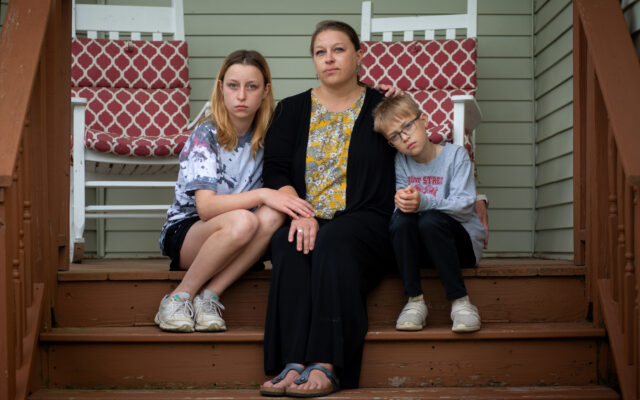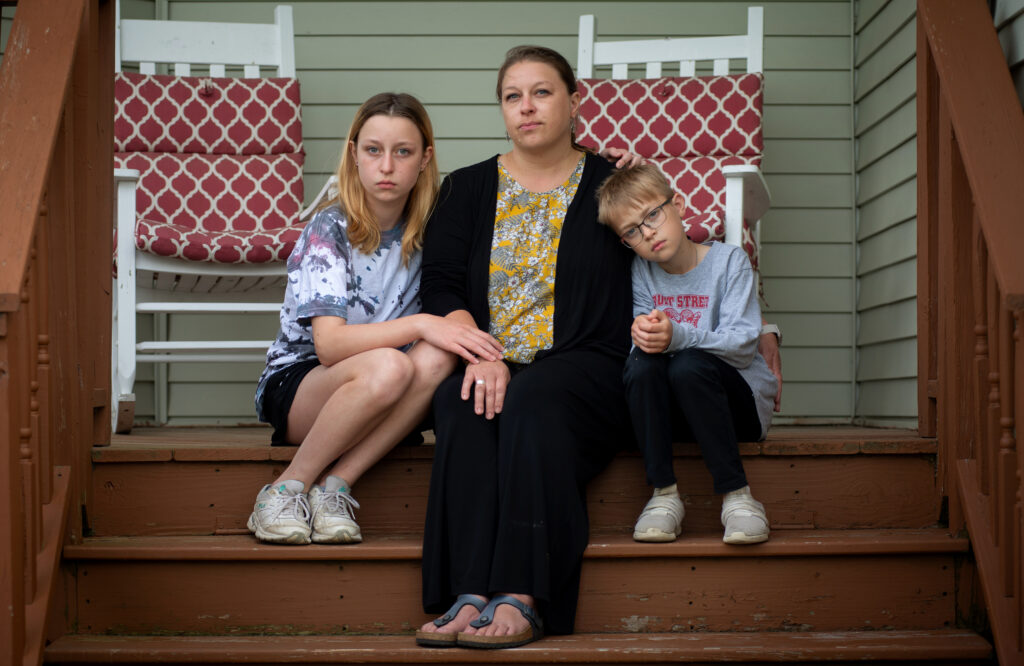
What Maine parents are telling their kids after yet another school massacre
By Lia Russell and Kathleen O’Brien, Bangor Daily News Staff
On Wednesday morning, May 25, Christina Caron dropped her children off at school in Bangor. Watching them walk through the doors, Caron said she was reminded that the parents of 19 Uvalde, Texas, children did the same a day earlier, not knowing they would never see their children alive again.
The Tuesday shooting that killed 19 children and two teachers at a Texas elementary school left parents elsewhere struggling to help their children make sense of the deadliest instance of school violence in a decade. Parents who spoke with the Bangor Daily News said they tried to strike a balance between informing their children and not making them afraid to go to school.
Caron struggled to strike that balance while discussing the shooting with her 12-year-old daughter, Abby, and 9-year-old son, Colby.
“How much do I let them be kids? I don’t want them to live in fear, but I want them to be prepared,” Caron said. “The hardest part was when they asked why someone would do that, and I didn’t have an answer for them.”
Caron said she reminded her children they live in a safe community. But in the back of her mind, she said she knew, “just because we’re in Bangor, Maine, doesn’t mean it couldn’t happen here.”

TALKING TO KIDS – After the Texas elementary school shooting on Tuesday, Christina Caron struggled to strike a balance between informing her children Abby, 12, and Colby, 9, and making them afraid to go to school.
On Friday, May 27, a few days after the shooting, Caron said she feels angry more than anything that school shootings continue while lawmakers have done little to stop them.
“It has been 10 years since Sandy Hook, and we haven’t done anything except teach them active shooter drills,” she said. “It should not be on our children and teachers to keep themselves safe at school.”
Neither of Leah Kresge’s children were afraid to attend school on Wednesday, but the Uvalde shooting the day before had clearly affected them.
When Kresge, who lives in Winterport, went to speak to her younger daughter, Inez, the 7-year-old said her older sister, Amelia, 17, had already spoken to her about what had happened and how to navigate a school shooting.
“For my teen, the shooting touched her more deeply once she realized that the kids were Inez’s age,” Kresge said.
James Bailey of Hampden said he waited to have a conversation about the Uvalde massacre with his 11-year-old twins, Sage and Grayson, because he didn’t want to have a hurried discussion before school on Wednesday.
“I didn’t want to make it a point of urgency because urgency makes kids nervous,” Bailey said. “I didn’t want to convey to them that they should be worried about school on Wednesday because that’s not helpful.”
Bailey said he also tries to “compartmentalize his emotions” when working through tragedies. He said he wants to be realistic about the chances of something like that happening in Hampden to soothe any fear his children have while ensuring they’re prepared for the unimaginable.
“I don’t see how an emotionally charged conversation would help them cope with the fear of a shooting happening,” he said. “What you need in a crisis is a cool head, and if I can help instill that in them, that’s my goal.”
Bailey said he encourages his twins, both fifth-graders at George B. Weatherbee School, to listen to their teachers in an emergency because he trusts they know how to protect their students. He said he doesn’t want to give them instructions that may contradict what they’ve learned to do in school shooting drills.
“I don’t want them to be frozen thinking, ‘Should I do what my dad said or do what my teacher said?’” Bailey said. “I want them to only think of the drills in that situation and nothing else because that will give them the greatest chance of survival.”
Like Caron, Bailey said he feels frustrated by the absence of action from lawmakers to stop the trend of school shootings.
“We know the problem, we know the trend, and what have we done about it?” he said. “As evidenced by the increase in school shootings, not enough.”
The Uvalde massacre is the country’s deadliest K-12 school shooting since Dec. 14, 2012, when Adam Lanza killed 26 children at Sandy Hook Elementary School in Newtown, Connecticut. It marked at least the 77th incident of gunfire on U.S. school grounds this year, resulting in 14 deaths and 45 injuries, according to Everytown for Gun Safety, a gun control advocacy organization.
There have been at least 188 mass shootings at schools since 1970, according to a New York Times analysis of data from the Center for Homeland Security and Defense at the Naval Postgraduate School in Monterey, California.
Maine has never seen one of those, though a handful of Maine incidents are in the Center for Homeland Security and Defense’s database: the 2008 armed hostage-taking of fifth graders at Stockton Springs Elementary School and a 2014 suicide in the parking lot of Benton Elementary School.
Schools in Maine have also received more threats of violence during the pandemic, compounding parents’ anxieties.
Amanda Kahl, an artist in Medford, said that both of her children’s Friday classes were canceled after School Administrative District 41 in Milo received a threat. She explained the situation to her kids, who are 6 and 9.
“I did also tell them that it’s very likely that whoever made that threat doesn’t mean it, they were just trying to cause trouble or trying to get out of having school today, but the school is doing everything we can to keep them safe,” Kahl said.
Mattanawcook Academy in Lincoln, where Kahl’s husband, Derek Brewer, teaches ninth grade history, went into “soft” lockdown on Friday morning after another school in the district received a threat.
Students were allowed to change classrooms between classes, but no one was allowed to change rooms while class was in session, and doors were locked. Lincoln police said there was no active threat around 11:30 a.m. Friday after the district received a threat around 8:15 that morning.
“We’re shelter[ing] in place and there’s a bunch of cops here,” Brewer texted Kahl.
“Gotta love this country.”